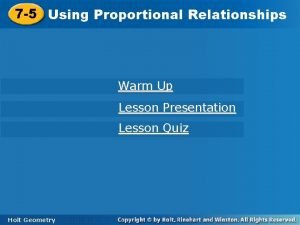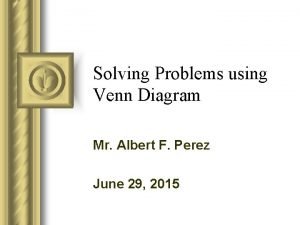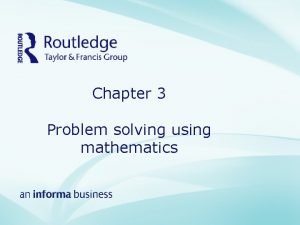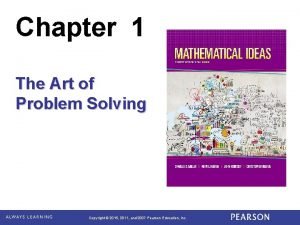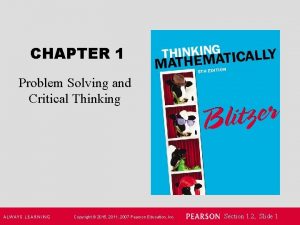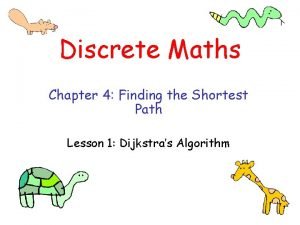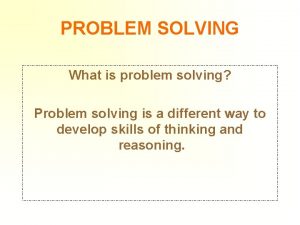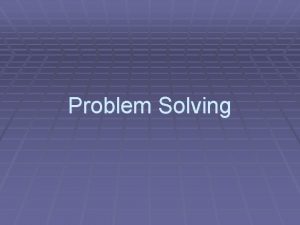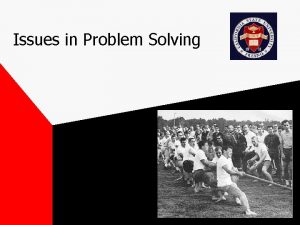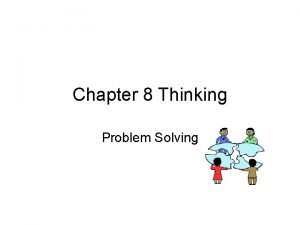Chapter 3 Problem solving using mathematics Chapter summary

Chapter 3 Problem solving using mathematics

Chapter summary • This chapter gives an insight into how a problem solving approach can underpin all learning and teaching of mathematics. • It tackles the key ideas of communication, reasoning and problem solving • It introduces the big ideas of specialising and generalising

Starting point 1 3 5 7 … 2 6 10 14 … 4 12 20 28 … 8 24 40 56 … … …

International Baccalaureate Learners should be: • • • Exploring, wondering and questioning Taking and defending a position Using critical thinking skills to defend a position Making and testing theories Experimenting and playing with possibilities Solving problems in a variety of ways

Thinking mathematically • Everyone can think mathematically • Mathematical thinking can be improved by practising reflection • Mathematical thinking is provoked by contradiction, suspense and surprise • Mathematical thinking is supported by an atmosphere of questioning, challenging and reflecting • Mathematical thinking helps in understanding oneself and the world

Enquiry and problem solving Look at the number line below 1 2 3 4 5 6 7 8 9 10 11 12 13 14 15 • Look at chunks of the number line that contain consecutive numbers such as 4, 5 or 11, 12 and so on. • What do notice about the total. Do you think this is true for any pair of consecutive numbers? Why do you think this? • What about the sum of three consecutive numbers?

Portfolio task How many squares are there on a chessboard? The answer is not 1 or 64 or 65.

Observing problem solving using mathematics • How would you introduce this activity to a class? • What questions would you ask to scaffold the learning? • How would you ensure you left the activity open whilst ensuring it was accessible to all learners? • How would you encourage generalisation?

Reflecting on your learning How confident do you feel in: • Supporting your learners in tackling an open investigation in mathematics? • Modeling being a mathematician? • Supporting children in articulating their thinking processes by articulating your own thinking process?
- Slides: 9
